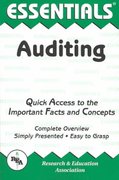Question
Suppose you bought two pieces of land for $100,000 each, the first piece has permanently appreciated in value and is now worth $120,000, while the
Suppose you bought two pieces of land for $100,000 each, the first piece has permanently appreciated in value and is now worth $120,000, while the second piece has permanently reduced in value to $75,000. Applying conservatism and the historical cost principles, how would you account for the change in value of the two pieces of land? Option A: I would leave both pieces of land at $100,000 each on the books. Option B: I would leave the first piece of land at $100,000 and write the second down to $75,000. Option C: would write up the first piece of land to $120,000 and the second down to $75,000. Option D: I would write the first piece of land up to $120,000, and leave the second piece of land at $100,000. The answer depends on the accounting standards that are being followed. Under US GAAP, the first piece of land would likely remain at $100,000 and the second would likely be written down to $75,000. This is a good representation of conservatism and the historical cost principle. Under IFRS, there is a better possibility that each piece of land could be written up or down to its current market value. What do you think are the main pros and cons of both historical cost and conservatism in this particular case?
Step by Step Solution
There are 3 Steps involved in it
Step: 1

Get Instant Access to Expert-Tailored Solutions
See step-by-step solutions with expert insights and AI powered tools for academic success
Step: 2

Step: 3

Ace Your Homework with AI
Get the answers you need in no time with our AI-driven, step-by-step assistance
Get Started


